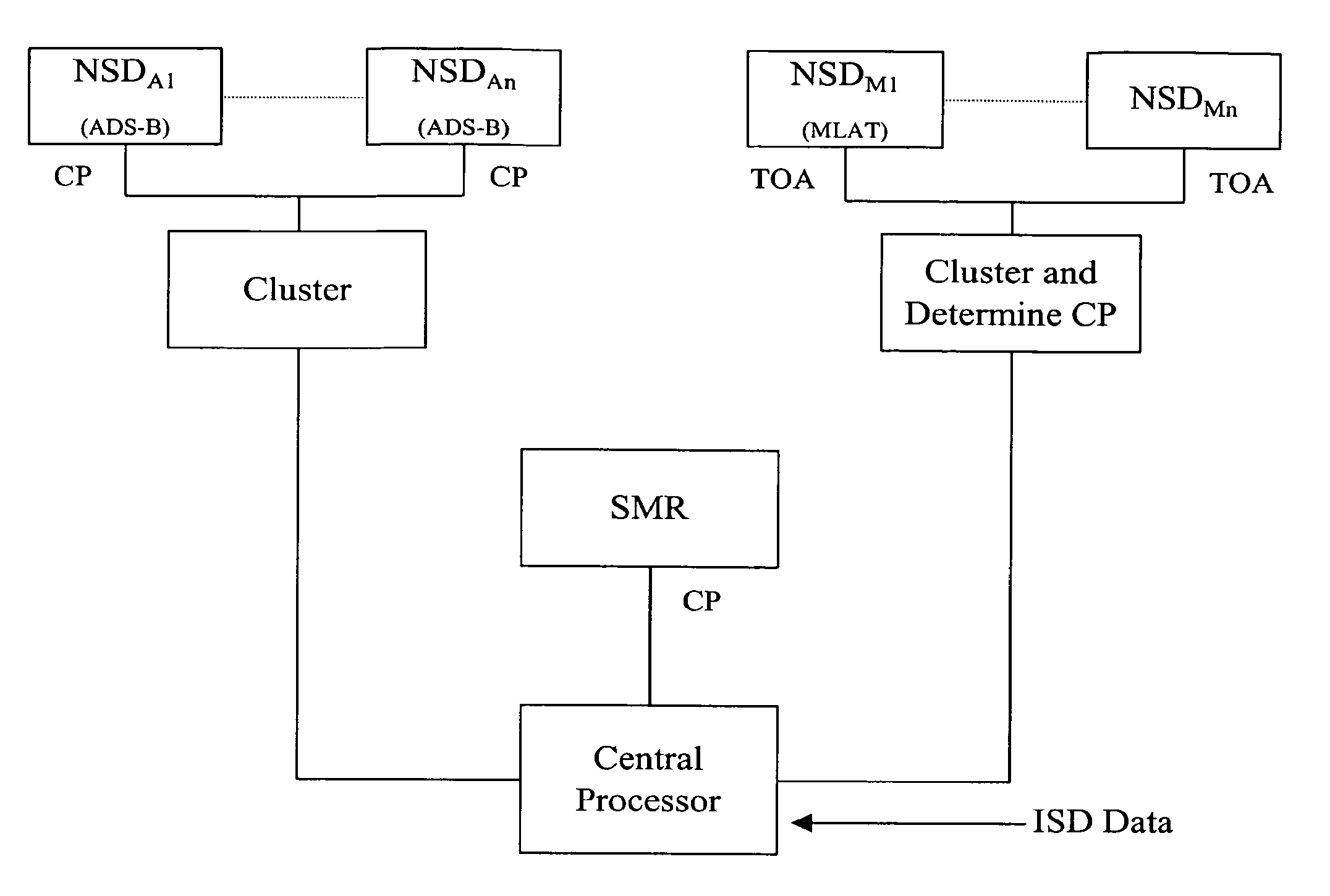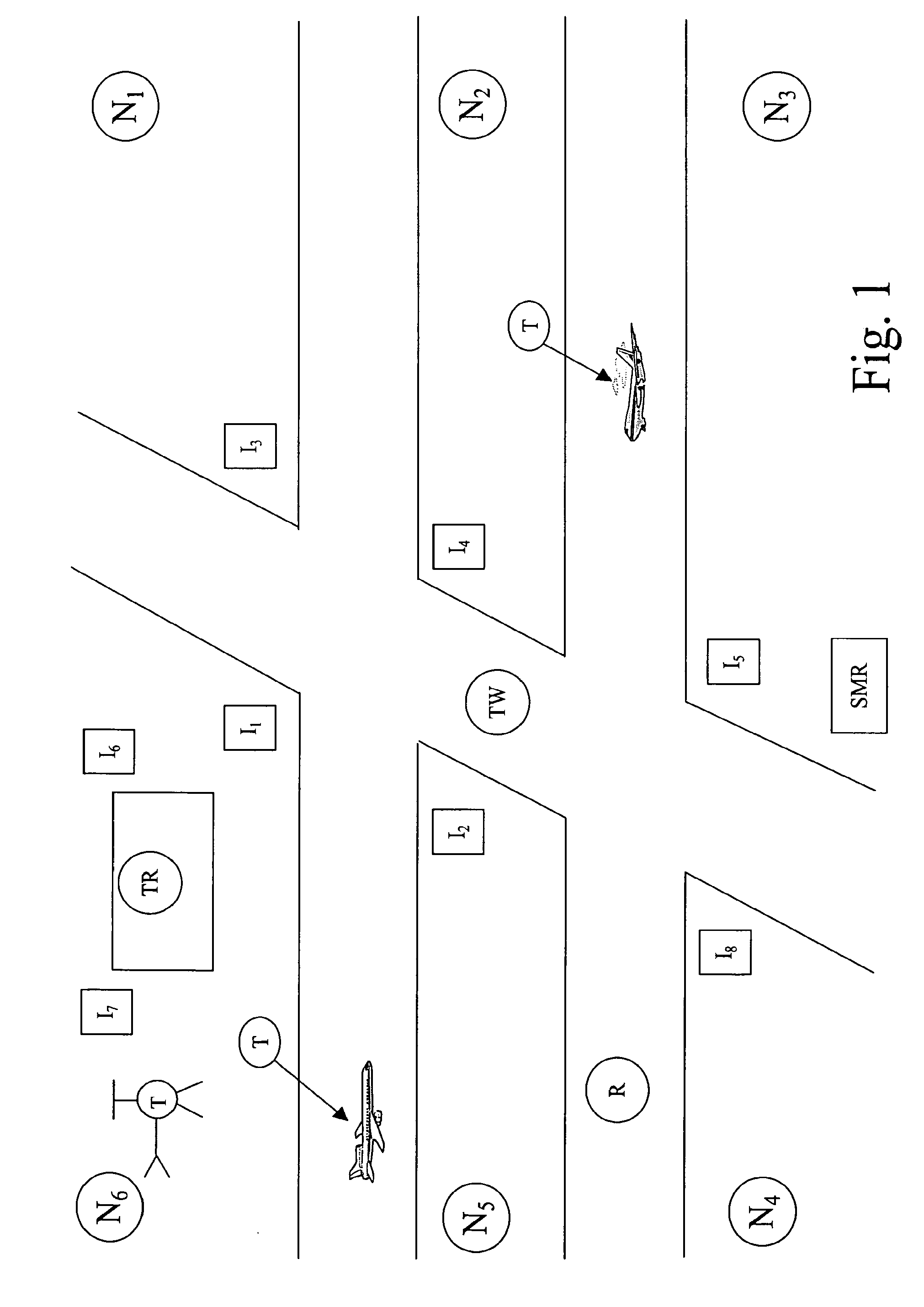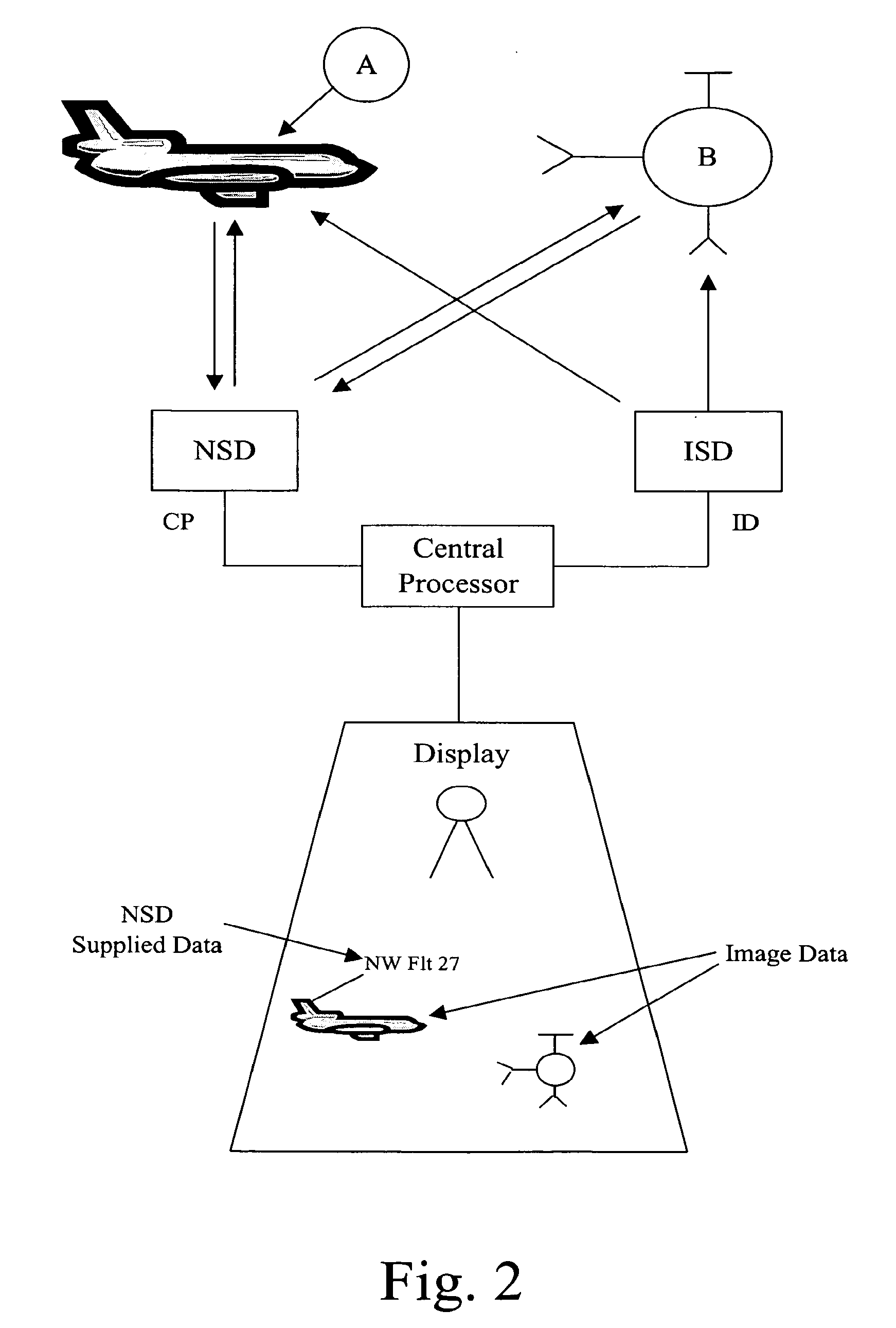Method and system for tracking position of an object using imaging and non-imaging surveillance devices
- Summary
- Abstract
- Description
- Claims
- Application Information
AI Technical Summary
Benefits of technology
Problems solved by technology
Method used
Image
Examples
Embodiment Construction
[0049]FIG. 1 is a plan view of a hypothetical airport setting to describe the method and system of the present invention. The airport includes a terminal (TR) located near runways (R) and taxiways (TW) on which aircraft and supporting ground vehicles travel. A plurality (N1-N6) of non-imaging surveillance devices (NSDs) are positioned at known locations around the airport. A plurality (I1-I8) of imaging devices (ISDs) are also positioned at known locations around the airport. FIG. 1 also shows a surface movement radar (SMR) which is used to detect the presence of aircraft and vehicles in and around the airport.
[0050]The NSDs used in the present invention can include any type of terrestrial or space-based surveillance device that does not rely upon imaging to detect the presence of a target. The NSDs can be either “cooperative” surveillance devices, in that they rely upon transmissions emitted from a target itself to detect the presence and position of the target, or “non-cooperative...
PUM
 Login to View More
Login to View More Abstract
Description
Claims
Application Information
 Login to View More
Login to View More - R&D
- Intellectual Property
- Life Sciences
- Materials
- Tech Scout
- Unparalleled Data Quality
- Higher Quality Content
- 60% Fewer Hallucinations
Browse by: Latest US Patents, China's latest patents, Technical Efficacy Thesaurus, Application Domain, Technology Topic, Popular Technical Reports.
© 2025 PatSnap. All rights reserved.Legal|Privacy policy|Modern Slavery Act Transparency Statement|Sitemap|About US| Contact US: help@patsnap.com



